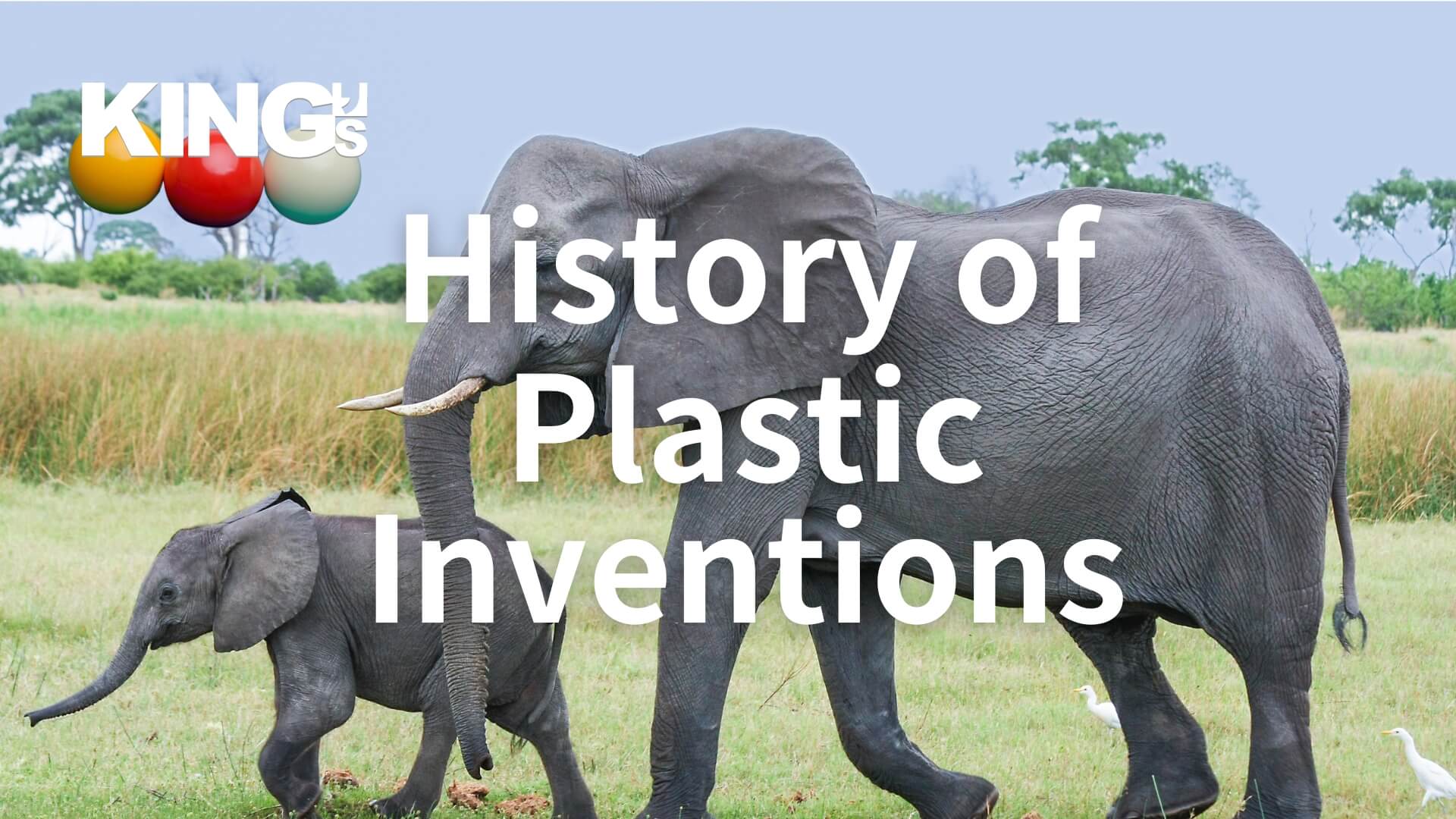
The Ivory Crisis and the Birth of Celluloid
Over 150 years ago, in the mid-19th century, as the Industrial Revolution progressed, there was an increasing demand for various materials. At that time, ivory, known for its sturdy yet delicate texture, was widely used for making billiard balls, buttons, knife handles, piano keys, dentures, and more. However, excessive hunting led to a scarcity of ivory resources and even threatened the survival of elephants.
To solve this problem, the American billiard manufacturer Phelan & Collander issued a challenge, offering a reward of $10,000 to anyone who could find a substitute for ivory. This reward caught the attention of a visionary inventor, John Wesley Hyatt. Inspired by Parkesine, the world's first synthetic plastic invented by Alexander Parkes in 1862, Hyatt began his own experiments. After relentless efforts, he invented Celluloid, a material synthesized from nitrocellulose and camphor, ushering in a new era of utilizing commercial synthetic materials for human use.
The Invention and Advancement of the Injection Molding Machine
The Hyatt brothers did not claim the reward money; instead, they set up their own business making things like billiard balls out of their new material, Celluloid, instead of using horn or ivory. But they didn't stop there. They also came up with the first injection molding machine, called the Hyatt Stuffing Machine. This was a big deal because it worked better than older machines meant for metal. They got a patent in 1872. This machine could heat up Celluloid and then push it into molds to cool down and set into new shapes. These innovations not only successfully replaced ivory, reducing the demand and thus saving elephants from excessive hunting, but the advent of the injection molding machine also laid the foundation for the future development of the plastic industry.
.jpg?nrroc4anyf)
Manual Plastic Injection Molding Machine replica in Green Island, Taiwan
World War II and the Rapid Development of Plastics
During World War II, there wasn't enough metal and other materials, so plastic became a great alternative for making stuff needed for both the army and everyday people. New kinds of plastic like nylon and polystyrene were used to make gear for soldiers that was light to carry. They also made everyday items that were strong and cheap.
After the war ended, the plastic used in the war started to be used for regular stuff too. This made even more kinds and amounts of plastic products. Because there were so many things to buy, the plastic business grew super fast. Plastic became really important for building things, making cars, and household stuff like fridges and TVs. Since plastic was cheap and could be used for lots of different things, it helped the economy grow after the war and became a symbol of new and better ways of living.
Diversification and Applications: The Dawn of the Plastic Era
In the realm of consumer goods, the era of plastic toys began with the manufacturing of the Hula Hoop in the United States in 1957, which quickly became a beloved item. Following this, the emergence of LEGO bricks and Barbie dolls further promoted the popularity of plastic toys, making them constant companions for children.
Plastic bags were initially invented by a Swedish engineer in 1959 with the aim of reducing the use of paper bags and protecting forests. By 1982, American supermarkets began using plastic bags, which rapidly replaced paper bags.
Regarding the PET bottle, which stands for Polyethylene Terephthalate and is often abbreviated as PETE, its history dates back to 1967. Nathaniel Wyeth of DuPont in the USA began developing a bottle capable of holding carbonated drinks, aimed at replacing the heavier and more fragile glass bottles. This innovation resulted in the creation of a new type of plastic bottle, later known as the PET bottle, for which DuPont secured a patent in 1973.
Plastic hasn't just changed how products are made; it's also changed how we live and what we buy. From plastic toys to textile fibers, from product packaging to disposable utensils, the wide use of plastic has made our lives easier and more comfortable.
Plastic Pollution and Waking Up to Green Living
As plastic products became common everywhere, people started to see how plastic waste harms our planet. The problem with plastic is that it doesn't break down easily, leading to dirty oceans and land degradation, making us think more about protecting the environment.
Many countries have started taking action to deal with these environmental challenges. For example, Kenya banned plastic bags because they were clogging drains and causing cities to flood during rain. Denmark has put a tax on plastic bags, and since 2002, Taiwan has been gradually introducing policies to reduce plastic use, with some stores no longer giving out free plastic bags.
While these steps have helped reduce plastic pollution a bit, making plastic use sustainable will take a global effort. This includes cooperation among governments, businesses, and consumers, as well as innovations and improvements in how plastic is made, used, and recycled.
.jpg?owjnq0skdp)
KING's Solution and Taiwanderful's Green Actions
KING's Solution Corp. is all about making the plastic industry greener and supports teaching people about plastic recycling. In 2023, KING's teamed up with the social enterprise Taiwanderful to spread the word about recycling plastic. They believe that through education and community involvement, along with good recycling practices, they can create a sustainable environment that supports and grows these activities.
Over the last year, KING's and Taiwanderful have started positive changes in communities through various events and campaigns, setting an example for other young business leaders. This year (2024), Taiwanderful plans to makeover spaces on Green Island in Taiwan to promote eco-friendly tourism and is also looking to make a bigger impact by starting an international association to get more people involved in this social movement. This new association will help spread Taiwanderful's mission further, pushing for plastic recycling and environmental education to make a bigger and longer-lasting impact.
